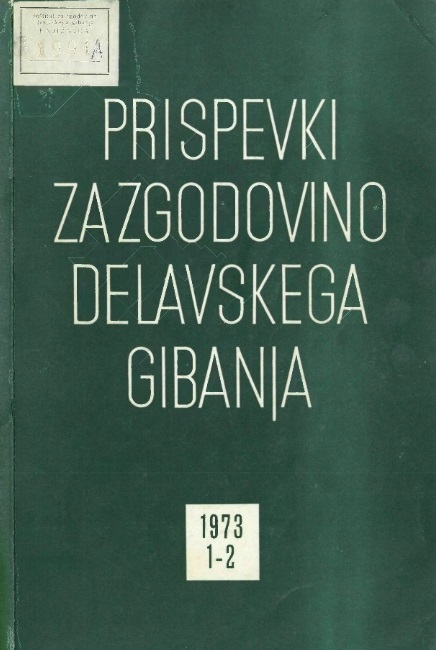
Recenzija: Slovenci in jugoslovanska skupnost
The review of: Lojze Ude, Slovenci in jugoslovanska skupnost. Založba Obzorja, Maribor 1972, 389 strani, 8°.
More...We kindly inform you that, as long as the subject affiliation of our 300.000+ articles is in progress, you might get unsufficient or no results on your third level or second level search. In this case, please broaden your search criteria.

The review of: Lojze Ude, Slovenci in jugoslovanska skupnost. Založba Obzorja, Maribor 1972, 389 strani, 8°.
More...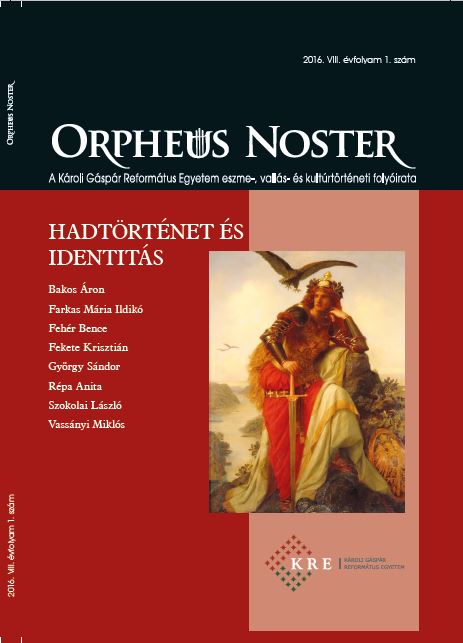
Kokugaku of the Edo period can be seen as a key factor in defining cultural (and national) identity based on Japanese cultural heritage in the 18th and early 19th centuries. Kokugaku focused on Japanese classics, on exploring, studying and reviving (or even inventing) ancient Japanese language, literature, myths, history and also political ideology. ‘Japanese culture’ as such was distinguished from Chinese (and all other) cultures, and thus ‘Japanese identity’ was defined. Meiji scholars used kokugaku conceptions of Japan to construct a modern nationalism that was not simply derived from Western models and was not purely instrumental, but made good use of pre-modern and culturalist conceptions of community. The role of pre-modern cultural identity in the formation of modern Japanese (national) identity – following mainly Miroslav Hroch’s comparative and interdisciplinary theory of national development – can be examined in comparison with the ‘national awakening’ movements of the peoples of EastCentral Europe. Before modernity, in the shadow of a cultural and/or political ‘monolith’ (China for Japan, and Germany for Central Europe), ethnic groups or communities started to evolve their own identities with cultural movements focusing on their own language and culture, thus creating a new type of community, the nation. A comparative examination of texts (discourses) illustrates that similar modes of argumentation (narratives) can be identified in these movements: ‘language’ as the primary bearer of collective identity, the role of language in culture and ‘culture’ as the main common attribute of the community; as well as similar aspirations to explore, search and develop the native language, ‘genuine’ culture, and ‘original’ traditions. This comparative research offering ‘development patterns’ for interpretation can help us understand how ‘cultural identity’ played an important role in the formation of national identity, with its effect (‘cultural nationalism’) present even today in Japan and in Central Europe, too.
More...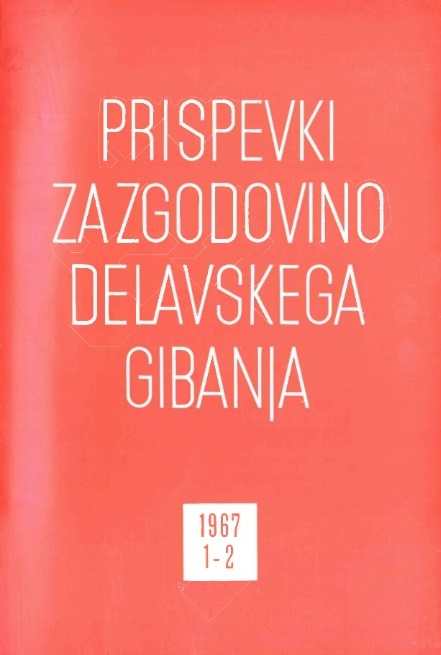
Au cours de la consultation scientifique consacrée au cinquantenaire de la révolution d'octobre et au trentième anniversaire de la fondation du Parti Communiste de Slovénie, nous devons mettre ces deux événements au même dénominateur et parler de deux révolutions, de leurs caractères communs et essentiels et de leurs caractères spécifiques, conditionnés par le temps et le lieu.
More...
Après les élections de mai 1935, en dépit des falsifications des résultats électoraux, de la terreur et de la pression générale du régime, l’opposition unifiée obtint un grand nombre de suffrages et se présenta comme un mouvement politique d’importance. C’est alors que, de nouveau, la question nationale en Yougoslavie apparut au premier plan; elle n’avait d’ailleurs pas cessé d’être un constant élément de crises. Il ne faut pas non plus oublier l’influence catastrophique de la crise économique mondiale ni- après sa fin- la tendance à l’orientation économique et politique vers l’Allemagne hitlérienne. Au lendemain des élections, l’opposition bourgeoise se trouva presque au sommet d’un vaste mouvement populaire contre le régime, mais elle ne sut pas lui donner de programme. Elle se décida à une politique de tergiversion. La gauche agraire seule était très active en 1935, mais elle tendait surtout à s’affirmet comme parti et non pas comme fondatrice d’un mouvement véritablement populaire et révolutionnaire.
More...
Dans la région du Prekmurje, les Slovènes, avaient été de tout temps opprimés tant au point de vue national que sous l’angle social et en outre exposés à une intense magyarisation. Au cours des dernières années de la Première guerre mondiale, la situation changea tout à coup. L’éveil national des Slovènes était soutenu par la Déclaration de mai, les activités de Wilson et aussi, dans une certaine mesure, par la révolution d’octobre. Une vague de révolte se fit jour parmi la population de Prekmurje surtout à partir du 2 novembre 1918. Elle fut sévèrement réprimée par la bourgeoisie, mais en mars 1919, la situation empira en Hongrie. Le prolétariat s’empara du (pouvoir et Bela Kun devint la plus haute personnalité du gouvernement des soviets en Hongrie. Dans la région de Prekmurje, le personnage le plus influent fut le dr. Bela Obal. A Murska Sobota on constitua un directoire composé de membres du parti social-démocrate, car il n’y avait pas de communistes. Le bolchevisme au pouvoir voulait faire de la région de Prekmurje une province culturelle autonome qui n’aurait pas été rattachée à la Yougoslavie. La contre-révolution gagna le bas Prekmurje au mois d’avril-elle n’y put agir immédiatement, et en mai, une conspiration contre le bolchevisme fut organisée aussi à Murska Sobota. Le 30 mai on proclama la république socialiste de la Mura. Elle fut attaquée et liquidée en 3 jours par les bataillons ouvriers de Budapest. C’est alors seulement que se multiplièrent les organisations communistes.
More...
En 1914, juste avant l’entrée en guerre de la monarchie des Habsbourg le gouvernement mit en vigueur une loi de guerre datant de 1912, d'après laquelle les cheminots, les mineurs, les ouvriers de l’industrie lourde et de quelques autres ateliers travaillant pour l’armée étaient mobilisés et soumis au code pénal militaire. L’impossibilité de mener une action normale, de régler la question des salaires et des rapports de travail, les appels sous les drapeaux, provoquèrent une diminution sensible des membres des organisations ouvrières professionnelles et la presque disparition de leur activité. La révolution bourgeoise-démocratique de février 1917 en Russie donna cependant un nouvel élan eux mouvement ouvrier. Pour la première fois en temps de guerre, les ouvriers fêtèrent le Premier mai et, dans leurs réunions, manifestèrent pour une paix immédiate sans conquêtes et sans humiliation d’aucun des belligérEmts, et saluèrent les succès des ouvriers en Russie. En bien des points de la monarchie austro-hongroise, le célébration du Premier mai fut suivie d’une vague de grèves. La Slovénie ne fit pas exception. Le 28 juin 1917 éclatait à Maribor la première grève des ouvriers des ateliers du chemin de fer.
More...
Dans cette atmosphère d’élan général de libération nationale après 1918, personne ne fut surpris de voir que les hommes de lettres Slovènes étaient plutôt en faveur de la révolution d’octobre. Si nous faisons abstraction du poème de Valerijan Brjusov »Révolte« écrit en 1905 et publié dans la revue »Ljubljanski Zvon« (La Cloche de Ljubljana) dans son numéro de mars 1918 dans la traduction d’Ivan Prijatelj, trois écrivains Slovènes qui avaient été en Russie au moment de la révolution d’octobre mais étaient bientôt rentrés dans leur pays contribuèrent le plus à interpréter les événements d'alors. Pavel Golia, Josip Vidmar, Vojeslav Mole. Un des interprètes les plus éminents de la révolution était le poète et publiciste Fran Albreht, mais son esprit révolutionnaire faiblit après 1920. Les idées de la révolution d’octobre ne laissèrent pas de troubler certains écrivains catholiques p. ex. Stanko Majcen et Jože Piber. Un groupe d'écrivains dont les plus en vue étaient Govekar, .Vladimir Levstik et Ivan Tavčar tentait consciemment de minimiser T importance de la révolution. La Yougoslavie bourgeoise, par le fameux »obznana« (1920) et la »Loi sur la sécurité de l'Etat« (1921) empêcha la création d’une feuille littéraire qui se serait appuyée sur T idéologie marxiste et aurait groupé autour d'elle les écrivains d’orientation marxiste et leurs sympathisants. Mais ils eurent à Trieste deux organes, surtout rédigés par Vladimir Martelanc. Malgré tout, chez de nombreux poètes et prosateurs, les thèmes sociaux et révolutionnaires restèrent à la base de leur inspiration; Tone Seliškar, Mile Klopčič, Srečko Kosovel, Lovro Kuhar, Ivan Vuk, Rudolf Golouh, Bratko Kreft, Juš Kozak et d’autres.
More...
Le sort des femmes Slovènes a été, de longs siècles durant, celui du peuple Slovène, vassal de féodaux allemands, hongrois, italiens, Cependant c’est à elles que revient le mérite d'avoir transmis la langue Slovène de génération en génération. Plus tard, dans la lutte de la jeune bourgeoisie Slovène contre la bourgeoisie allemande, cette langue conquit ses droits, devint langue littéraire et aida à la formation de la nation Slovène. Tant que l’activité publique des femmes se cantonna dans le domaine national et dans celui des bonnes oeuvres ,les représentants politiques et culturels de la bourgeoisie Slovène la considérèrent avec assez de bienveillance et même lui donnèrent des encouragements. Mais, dès que les femmes dépassèrent les limites de ce qui, selon les principes d’alors, leur était permis, cette bienveillance et ces encouragements cessèrent. Lorsque, en 1872, un de nos premiers socialistes, Matija Kunc essaya de faire entrer les femmes à la »Delavska izobraževalna društva« (Société pour l’instruction des ouvriers) de Ljubljana, le quotidien libéral »Slovenski narod« trouva la proposition ridicule. Et quand la femmé de lettres Zofka Kveder publia en 1900 son livre »Le Mystère de la femme«, dévoilant dans ce mystère l’exploitation, l’injustice et la dépendance qui était le lot des femmes, et accusant le système social d’être la cause de cette situation, libéraux et cléricaux attaquèrent violemment 1’ auteur et le livre, cependant que les socialistes éminents d’alors, et parmi eux le grand écrivain Ivan Cankar, se rangeaient à ses côtés.
More...
L’exposé donne en larges touches générales le développement du mouvement étudiant Slovène, depuis la création de l’Université de Ljubljana en 1919 jusqu’à l’occupation de la Yougoslavie en 1941. A cause de la place restreinte dont il disposait, l’auteur n’ a pris en considération que les processus idéologiques-politiques des diverses orgànisations et de groupes en particulier, et il a dû laisser de côté de nombreuses actions étudiantes comme manifestations, démonstrations etc. Le point de départ du développement du mouvement étudiant Slovène entre les deux guerres était la structure d'organisation idéologique-politique telle qu' elle s’était formée parmi les étudiants bientôt après la création de l’Université de Ljubljana. Cette structure succédait dans son essence au développement d’idées atteint jusqu' alors par les intellectuels Slovènes qui passaient les années de leurs études à l’étranger. Dès le début, lès étudiants Slovènes se groupèrent selon les courants politiques bourgeois d’alors: l’association »Danica« représentait les ca-choliques et »Jadran« les libéraux. Plus tard, il y eut encore d’autres groupements étudiants. Une nouveauté parmi les étudiants Slovènes, fut en mars 1920 la Société des étudiants communistes. Dès la création de l’Université de Ljubljana, pourrait-on dire, les étudiants ayant une activité politique étaient répartis selon lés idées qui répondaient aux circonstances politiques du moment en Slovénie.
More...
Dans la période qui se place avant la fin de la première guerre mondiale et immédiatement après, il faut distinguer entre les points de vue du mouvement ouvrier italien à l’intérieur des frontières de l’Italie d’avant Rapallo et le point de vue du mouvement ouvrier italo-sloveno-croate sur le territoire plus tard attribué à l’Italie. Le premier était conditionné par un Etat mono-national et le second par l’austro-marxisme. Dans la période où la tendance à la révolution allait croissant dans l’Italie d’après-guerre, la question révolutionnaire passait au premier plan et ce n’ est qu’ en fonction d’elle que se posait la solution de la question nationale.
More...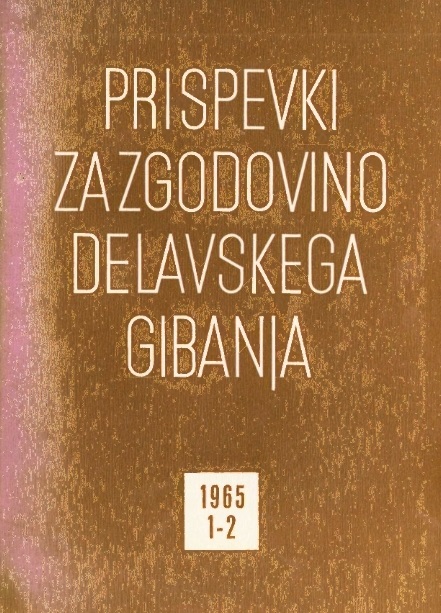
The review of: Adriano Dal Pont, Alfonso Leonetti, Massimo Massara - »Giornali fuori legge. La stampa clandestina antifascista 1922—1943«, ANPPIA Roma 1964, 340 str., 96 ilustr.
More...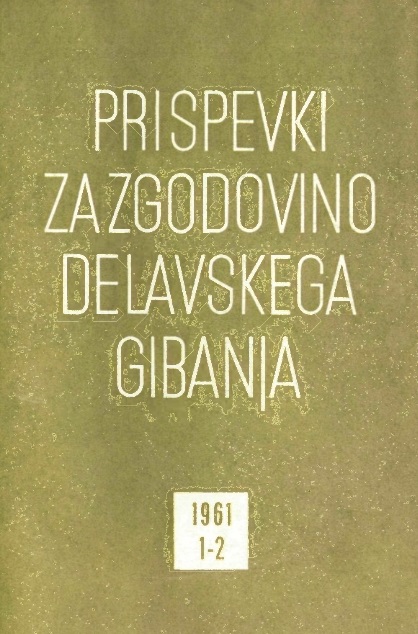
On the initiative of Communist Party of Slovenia, the Slovene people's Liberation Front organized four plebiscite actions between October 1941 and February 1942: on the occasion of certain memorial days, Liberation Front called the Slovenes to leave the streets and all public places between 7 and 8 p. m., as a protest against German, Italian and Hungarian occupation of the Slovene territory. The Slovenes obeyed the call. The »hour of silence« kept on those occasions clearly showed whom the great majority of the popnlation sided with. Besides that, the population showed its attachment to Liberation Front and demonstrated against the occupier and the reactionaries by strewing the streets with thousands and thousands of leaflets and small Slovene flags, writing mottoes and drawing signs on the walls and by acts of sabotage. Liberation Front began with those actions at the time of its first rising, notwithstanding the fact that the Axis States were then at the summit of their power. Those deeds were a great moral help to the Partisan's army in Slovenia.
More...
Dogodki, ki isem jih opisal za leto 1941 v tem člamku, so v glavnem moja osebna doživetja. V nekaterih primerih sem se zaradi povezanosti dogodkov dotaJflDil tudi takih, katerim sem osebno prisostvoval. Spominjam se jih iz obravnav in posvetovanj, ki smo jih imeli v času organizacijskih priprav za NOB v vojnorevolncionamem komiteju jeseniškega okrožja, aili pa potem v štaibu Cankarjevega bataljona. Vmes so dogodki, o katerih sem zvedel od Stanka Žagarja, alatna Pokrajinskega partijskega vodstva za Gorenjsko. Vse to utemeljujem.'Bil sem z njim v stalnem stiku od julija 1941, ko je prišel na Gorenjsko, do njegove smrti 27. marca 1942. Z Jožetom Gregorčičem pa naju je vezala borba od začetka okupacije. Menim, da je kljub takemu značaju opisovanje dogodkov leta 1941, še zelo skromen prispevek za zgodovmo osvobodilne vojske, če jo gledamo v celoti. Potrebno je zbrati celotno gradivo pri preživelih borcih, aktivistih, zapornikih, izselljencih in podpornikih narodnoosvobodiilnega gibanja. Vse pripombe na moj sestavek, vsi popravki ali dodatki bodo lahko- le obogatili zgodovmo NOB na iGorenjskem, ki za leto 1941 zaradi objektivnih razmer ne razpolaga skoraj z nobenimi pisanimi dokumenti. [...]
More...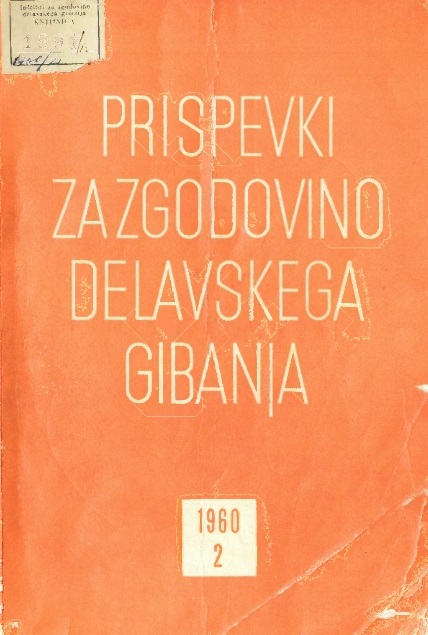
Leta 1961 poteka dvajset let, odkar so narodi Jugoslavije v prelomnem letu 1941 stopili na pot ljudske vstaje in revolucije, ki se je končala z zmago nad fašističnimi okupatorji, z ustanovitvijo federativne ljudske republike in prehodom k socialističnim preobrazbam. Tej slavni preteklosti bodo Prispevki za zgodovino delavskega gibanja posvetili v letu 1961 posebno številko. [...]
More...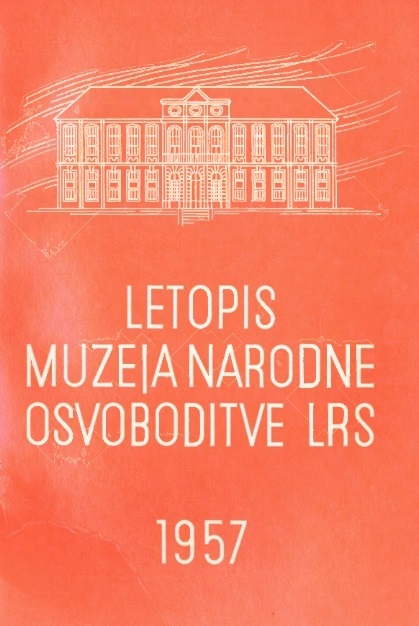
The partisan illegal press got a new push after the collapse of illegal printing works in Ljubljana after the capitulation of Italy when from the liberated towns of the then Province of Ljubljana printing machines with the necessary outfit and material were taken to the free woods of Slovenia. This decision was important because after the German offensive in the autumn 1943 these towns were occupied by Germans who made these towns their stable strongholds. In the upper parts of Slovenia (Gorenjsko) where the German foe particularly oppressed our Slovene population the leadership of the liberation movement felt a peculiar necessity to encourage by printed word the resistance of the people against the occuppier, and to found therefore his own illegal printing press. The organisation of this illegal press was entrusted by the Provincial Committee of the CPS and the Provincial Committee of the Front of Liberation for Gorenjsko to the experienced and skilled partisan technician Edo Bregar-Don, who succeeded in short time to organise in the free woods of the Poljana and Selce valleys three illegal printing works, which depended directly from the graphic department »B« of the Provincial technic CPS for Gorenjska which linked the whole organisation and managed all the illegal presses and technics in Gorenjska.
More...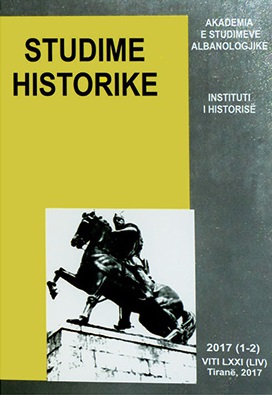
Demonstratat e vitit 1981 përbëjnë një nga ngjarjet më të rëndësishme të historisë së popullit shqiptar. Në arkivat e shtetit shqiptar ekzistojnë dokumente relevante arkivore si burime me vlerë historike të dorës së parë, të cilat ndihmojnë që analizat dhe përfundimet shkencore të jenë sa më të besueshme e më të qëndrueshme përballë kohës dhe kritikës së mirëfilltë historiografike. Duke u mbështetur në dokumentet e këtyre fondeve, Tirana zyrtare ishte në dijeni për shumë zhvillime politike që ndodhnin në atë kohë në Jugosllavi dhe Kosovë. [...]
More...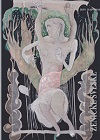
Indikativan slučaj s početka devedesetih godina proteklog stoljeća predstavlja očajni pokušaj probuđenih muških nacionalista da protjera i spali neistomišljenice koje su načinile usud odbivši da prihvate ideje i ideologije nastajućih jednonacionalnih kolektiva. Radilo se o otvorenom pozivu na protjerivanje, spaljivanje i linč "vještica iz Rija", afirmisanih ljevičarsko i proženski orijentiranih feministkinja. U polemičkim tekstovima koji su napisani protiv njih reflektuju se politike nacionalizma praćenog govorom mržnje, izrazitim seksizmom i snažnim i direktnim medijskim senzacionalizmom. U središtu nacionalpopulističke ideje o humanosti pada komunizma i demokratizaciji društava, otcjepljenju federativnih republika Jugoslavije po nacionalnom ključu i stvaranju etnički čistih društava (što je paradoks ideje demokratizacije) nalaze se opasne pojave političko-ideološke instrumentalizacije i tradicionalizacijske strategije (re)konstrukcije nacionalnog identiteta. [...]
More...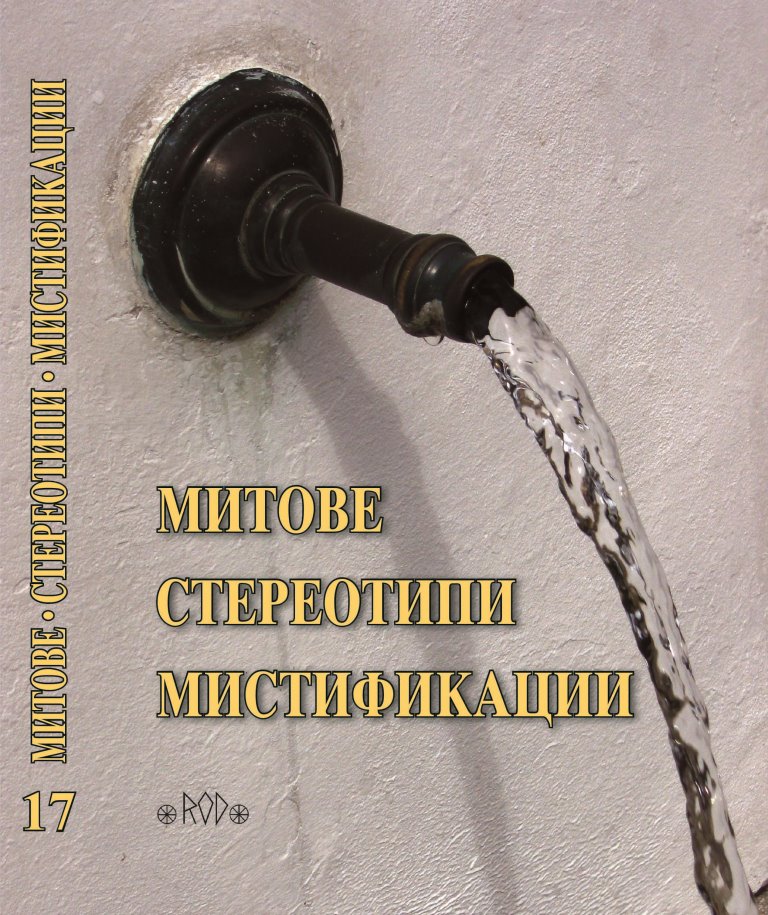
The paper examines the repression of Bulgarian officers conducted by the Communist regime (1944–1989). The general focus is on the lives of two officers from the town of Samokov, located near Sofia. The first is Colonel Konstantin Chichev, who was placed in Samokov for several years and lost his life in the Pazardzhik prison. More information about his life and military career can be found in a book and a paper written by the author. The second is General Vladimir Taninchev, who had all his property and the property of his family confiscated by the Communist state. His son Hristo, an officer who fought in WW2, and his daughters Elena and Viara were also repressed. Their fate is an example of the mass processes against all found guilty by the new state and leading to a series of suicides after the communist coup of 09.09.1944, confiscation of private property for the sake of the state, trials and imprisonment in concentration camps or prisons. Even families and relatives of the officers were persecuted from 1944 till the end of the regime in 1989.
More...
In the collection of terracotta reliefs discovered at the archeological site Vinicko Kale located in the museum “Terracotta” in Vinica, there are some specimens that have got characteristics completely different from those of the reliefs in the collection of twelve recognizable motifs that are dated in the Early Christian period or more precisely in the 5–6th century. These reliefs have some early Christian symbols in common which we meet separately or combined as a whole. The biggest preserved specimen is a square plate on which we meet all symbols combined as a whole; the others contain only some of them. The square pate is till now the only and unique one discovered on the territory of the Republic of North Mace¬donia and more widely. There were no more extensive researches of this plate and according to the only scientist who was studying it, professor doctor Kosta Balabanov, this plate “dedicated to the first elevated Apostle Andrew can be considered as the oldest icon in Macedonia”. The plate was discovered during the excavations in 2001–2002 and later in 2008 other broken fragments were found with the motifs which the square plate also has. According to the overall previous examination of the specimens from several aspects, there is another assumption (possibility) that it is 41 Psalm of David and that the plate dates from the period of the second half of the 4th century or with the other terracotta reliefs from the period of 5–6th century. The proofs are some fragments that are not applied on the square base as the plate dedicated to “Apostle Andrew” but as elements for the plates that were used for frieze. The purpose of these plates was most probably decorative and surely religiously educative and represents another proof of profound knowledge of Christian learning in this area during 5–6th century.
More...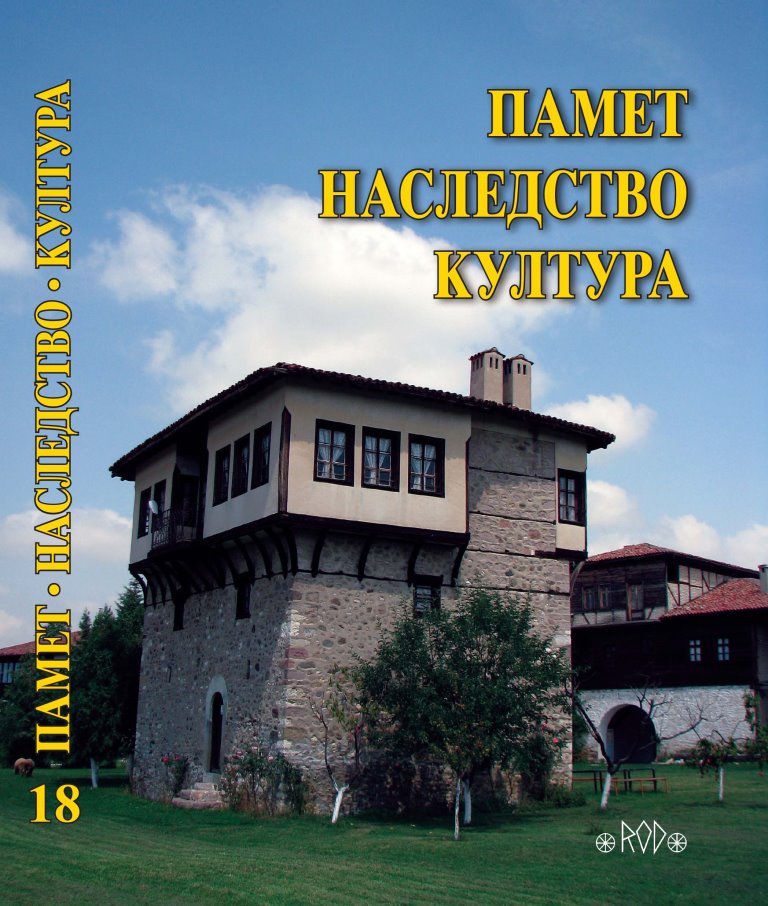
In this paper we will handle the late antique fortresses that are present on the territory of Kratovo. Kratovo as a self-governing municipality consists of 31 villages. In general, villages can be divided into mountainous and lowlands. The exact number of fortresses can not be reliably established. This conclusion was obtained due to the fact that systematic archaeological research was not carried out in this region, and the initial information for a greater number of fortresses was obtained from the reconnoitations in the middle of the last century, performed on this territory. About the number of fortresses from late antiquity in Kratovo, it can be said that there are about 26, with the possibility of increasing this number. As one of the most well-known and best explored fortresses from the late antique period in the Kratovo region are: Veliko Gradiste locality in the village Konjuh, the Kula-Zdravej Kamen in the village of Schlegovo, the site Gradiste in the village of Sakulica, and the locality Vidim in the village of Kuklica. The most representative fortress of these 4 was the fortress in the village of Konjuh, which has a continuity of living from prehistoric times to the Middle Ages, and it has experienced its flowering in the Roman and Late Antique times. By the way, this site is well researched, ie, there have been systematic archaeological researches since 1998. Our goal is to make a list of all the foundations of Late Antiquity and military and neighborhoods, which are not so famous. In the Large number of represented fortresses in this region is related to two key things, i.e. with the ancient roads and ancient mining.
More...